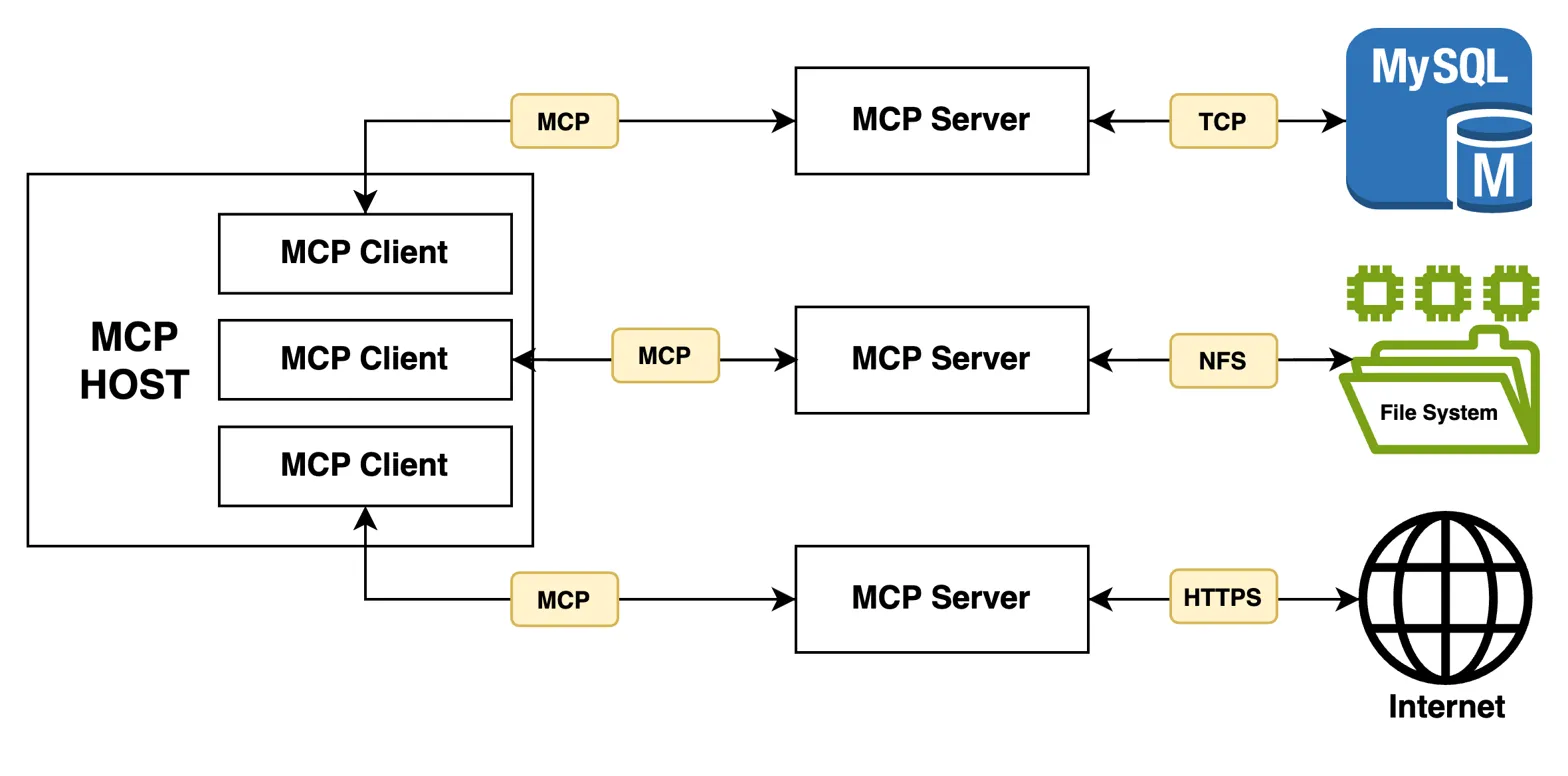Model Context Protocol (MCP): The Backbone of Dynamic AI Workflows
As the AI landscape rapidly evolves, the demand for systems that support modular, context-aware, and efficient orchestration of models has grown. Enter the Model Context Protocol (MCP) — a rising standard that enables dynamic, multi-agent AI systems to exchange context, manage state, and chain model invocations intelligently.
In this article, we’ll explore what MCP is, why it matters, and how it’s becoming a key component in the infrastructure stack for advanced AI applications. We’ll also walk through a conceptual example of building an MCP-compatible server.
What is the Model Context Protocol (MCP)?
MCP is a protocol designed to manage the contextual state of AI models across requests in multi-agent, multi-model environments. It’s part of a broader effort to make LLMs (Large Language Models) more stateful, collaborative, and task-aware.
At its core, MCP provides:
- A way to pass and maintain context (like conversation history, task progress, or shared knowledge) across AI agents or model calls.
- A standardized protocol to support chained inference, where multiple models collaborate on subtasks.
- Support for stateful computation, which is critical in complex reasoning or long-running workflows.

Why is MCP Relevant Now?
The growing interest in AI agents, function-calling APIs, and model interoperability has created a pressing need for something like MCP. Some trends driving MCP adoption include:
| Trend | Impact |
|---|---|
| Agentic Workflows | Models need shared context to collaborate efficiently (e.g., ReAct, AutoGPT, BabyAGI). |
| LLM Orchestration Frameworks | Tools like LangChain, Semantic Kernel, and OpenDevin push for context-aware memory and model chaining. |
| Open Model Ecosystems | Efforts like Hugging Face’s Inference Endpoints, vLLM, and Modal want to standardize inference behavior. |
| Retrieval-Augmented Generation (RAG) | Persistent context and metadata handling are vital for grounded reasoning. |
Leading companies like OpenAI (via ChatGPT APIs), Anthropic (via Claude’s memory), and Mistral are integrating ideas from MCP implicitly, if not through standardized APIs.
Core Concepts of MCP
An MCP server typically supports the following concepts:
Model Context
{
"session_id": "abc-123",
"user_id": "user-456",
"context": {
"history": [
{ "role": "user", "content": "Generate a project plan." },
{ "role": "assistant", "content": "Sure, here's a draft..." }
],
"task": "project_planning",
"dependencies": ["retrieval_plugin", "summarizer_model"]
}
}
Model Invocation with Context
{
"model": "gpt-4",
"input": "What are the next steps?",
"context_ref": "abc-123",
"metadata": {
"requested_capability": "planning.summarize"
}
}
Chained Outputs and Shared State
Each model contributes to a shared state, stored either in an in-memory store (like Redis) or a structured store (like Postgres + pgvector for embeddings).
Building a Basic MCP Server
Let’s outline what a minimal MCP-compatible server might look like using FastAPI and Redis.
Basic Server with Context Store
from fastapi import FastAPI, Request
import redis
import uuid
import json
app = FastAPI()
r = redis.Redis(host='localhost', port=6379, decode_responses=True)
@app.post("/invoke")
async def invoke_model(request: Request):
payload = await request.json()
context_ref = payload.get("context_ref")
input_text = payload["input"]
model = payload["model"]
# Load context
context = json.loads(r.get(context_ref)) if context_ref else {}
history = context.get("history", [])
# Simulate model response
history.append({"role": "user", "content": input_text})
response = f"Simulated response to: {input_text}"
history.append({"role": "assistant", "content": response})
# Save updated context
new_context_ref = context_ref or str(uuid.uuid4())
r.set(new_context_ref, json.dumps({"history": history}))
return {"output": response, "context_ref": new_context_ref}
Add Capability Metadata
Enhance the server to log requested capabilities and dependency resolution (e.g., invoking tools or submodels).
capability = payload.get("metadata", {}).get("requested_capability")
log_event(user_id, session_id, model, capability)
MCP vs Alternatives
MCP aims to serve as the underlying protocol, while frameworks like LangChain act as developer tooling on top.
| Feature | MCP | LangChain | Semantic Kernel | ChatML (OpenAI) |
|---|---|---|---|---|
| Context Persistence | ✅ | ✅ | ✅ | Partial |
| Model-Agnostic | ✅ | ❌ (Python-specific) |
✅ | ❌ |
| Stateful Memory | ✅ | ✅ | ✅ | Partial |
| Chaining Support | ✅ | ✅ | ✅ | ❌ |
| Explicit Protocol | ✅ | ❌ | ❌ | ✅ (format only) |
Adoption and Ecosystem Signals
- LangChain and LlamaIndex: Moving towards standardizing memory interfaces with composable context.
- OpenAI’s Assistant API: Explicitly supports persistent threads, similar to MCP session_id and shared memory.
- Anthropic’s Memory Plans: Incorporates long-term memory slots, resembling MCP’s context model.
- Meta’s Multi-Agent Research (2024): Proposes architectures that are context-routing centric — aligning with MCP’s goals.
Challenges and Future Directions
Technical Challenges
- Efficient context storage and retrieval at scale.
- Dynamic resolution of capabilities and tool invocation.
- Real-time chaining with latency constraints.
What’s Next?
- Open spec for MCP: Standardization akin to OpenAPI or GraphQL.
- Plugin Interop: Tool APIs that conform to context-aware interfaces.
- LLMOps Integration: Tracking usage, debugging flows, and observability in agentic systems.
Conclusion
The Model Context Protocol is a foundational building block for the next wave of AI-native applications. It abstracts and manages the complexity of context, model chaining, and agent collaboration — enabling AI systems that behave less like stateless endpoints and more like intelligent software agents.
As the AI ecosystem matures, MCP (whether explicitly named or not) will become central to orchestrating rich, multi-turn, multi-model AI systems.